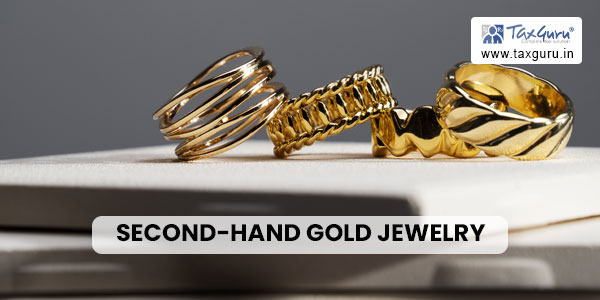The recent ruling from the Authority for Advance Rulings (AAR), Kerala, regarding the application of the margin scheme under GST to second-hand gold jewelry has raised some critical questions. This post aims to dissect the details of the case, focusing on its background, the questions it poses, the arguments presented, and the AAR’s final verdict.
Authority for Advance Rulings, Kerala (‘AAR’) in the case of M/s Best Money Gold Jewelry Limited “the applicant” has issued a ruling holding that Rule 32(5) of CGST Rules could not be made applicable supplier dealing in secondhand gold jewelry. Captioned ruling has been analyzed in this update.
1. FACTS OF THE CASE
- The applicant is in the business of buying and selling old/used / second-hand gold jewelry/ ornaments from unregistered persons.
- The applicant sells these second-hand goods ‘as such’ to the end customers without making any further processing except for some minor processing in the form of cleaning and polishing but without altering the nature of such ornament/ jewelry.

2. QUESTIONS BEFORE THE AAR
- In case the applicant has purchased used/ second-hand gold jewelry or ornaments from persons who are not registered under GST and that at the time of sale of such goods there is no change in the form/ nature of such goods and ITC will also not be availed on such purchase, if so the case, whether GST is to be paid only on the difference between the selling price and purchase price as stipulated under Rule 32(5) of CGST Rules, 2017?
3. CONTENTION OF THE APPLICANT
- Rule 32(5) provides that where a taxable supply is made by a person dealing in second-hand goods, then the value of supply shall be the difference between selling price and the purchase price.
- Such presumptive schemes are brought for trade facilitation and it is mandatory for the assessee as well as tax authorities to follow it in letter and spirit.
- That various AARs have ruled earlier holding that Rule 32(5) would be applicable in similar cases. (M/s Attica Gold Private Limited, Karnataka AAR, M/s Aadhya Gold Private Limited, Karnataka AAR, M/s Safset Agencies Private Limited, Maharashtra AAAR)
- That the applicant satisfies all the conditions of Rule 32(5) as follows:
- Input tax credit (ITC) not claimed on purchases made
- Goods sold either ‘as such’ or ‘with minor modifications
4. RELEVANT LEGAL PROVISIONS REFERRED
- Rule 32(5) of CGST Rules, 2017
5. OBSERVATION AND RULING BY THE AAR
- AAR observed that the crucial aspect to be examined is whether gold is a commodity whose value changes with change of ownership and as it gets old.
- That value of gold will not diminish even if it exchanged among 10 different users.
- That dealing in exchange of gold cannot be construed as dealing in second-hand goods and thus rule 32(5) would not be applicable and Section 15 of the CGST Act, 2017, holds good.
- The term ‘second-hand’ does not hold any meaning when it comes to items such as gold, land, currency etc. Gold in any form fails to pass the test of ‘second-hand goods’.
AAR finally ruled as under on the stated questions:
- The applicant cannot determine the value as per rule 32(5) of CGST Rules, 2017 for the supplies mentioned.
6. Our comments
In the captioned ruling, the Kerala AAR has considered the specific nature of gold as a product and held that due to nature of gold, it can never be second-hand. AAR further stated that the value of gold ornaments increases with the passage of time. AAR has neither commented nor took cognizance of multiple AAR rulings pronounced earlier wherein benefit of rule 32(5) was extended in similar cases. Further Maharashtra AAR in Safset Agencies has extended the benefit to auctioneer dealing in antique products as well, thus, to say that gold ornaments would become antique and valuable with passage of time and thus is not second-hand also does not sound logical.
*****
(Author can be reached at dinesh.singhal@snr.company or cadineshsinghal@gmail.com).
DISCLAIMER: The views expressed are strictly of the author. The contents of this article are solely for informational purpose and for the reader’s personal non-commercial use. It does not constitute professional advice or recommendation. Author do not accept any liabilities for any loss or damage of any kind arising out of any information in this article nor for any actions taken in reliance thereon. Further, no portion of our article should be used for any purpose(s) unless authorized in writing.





